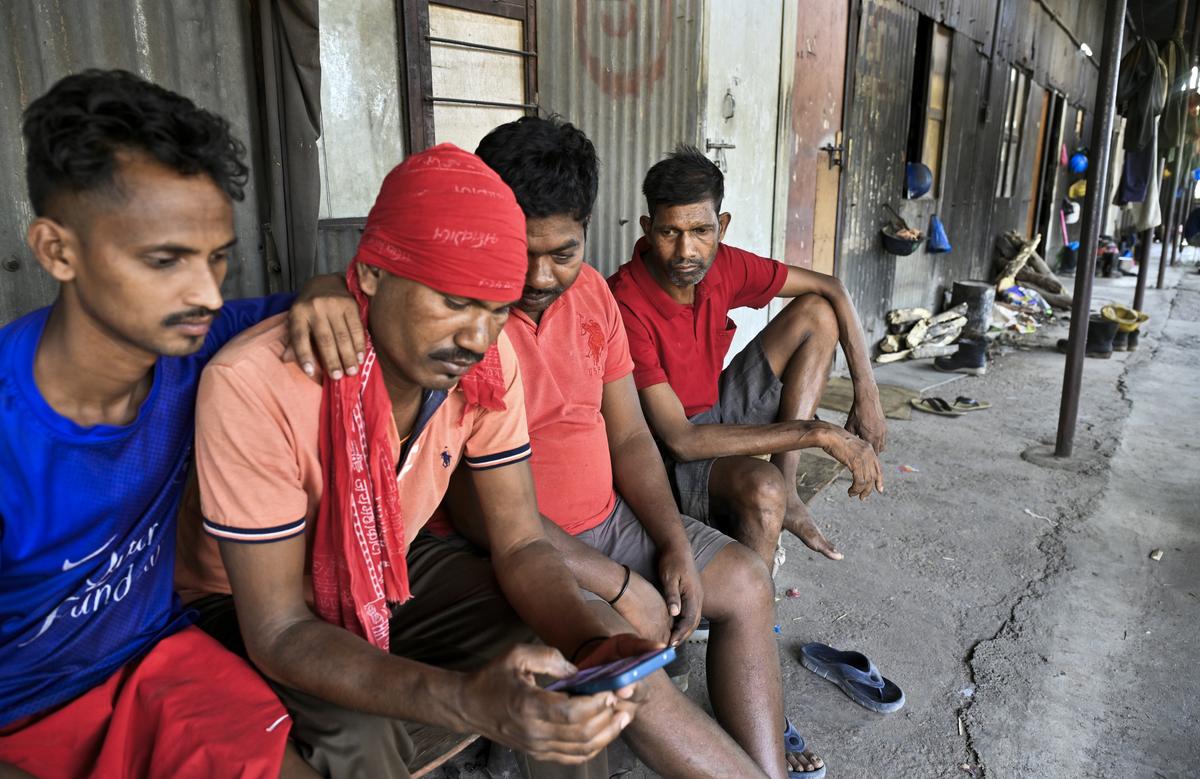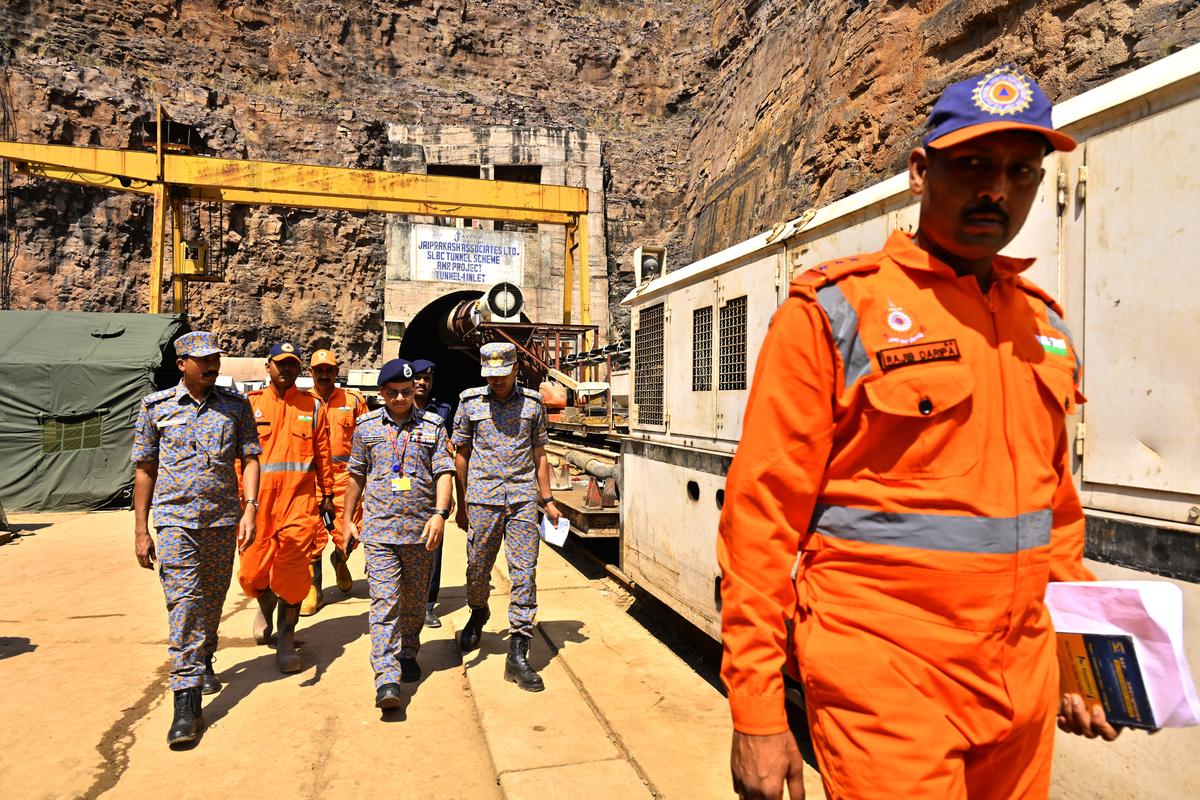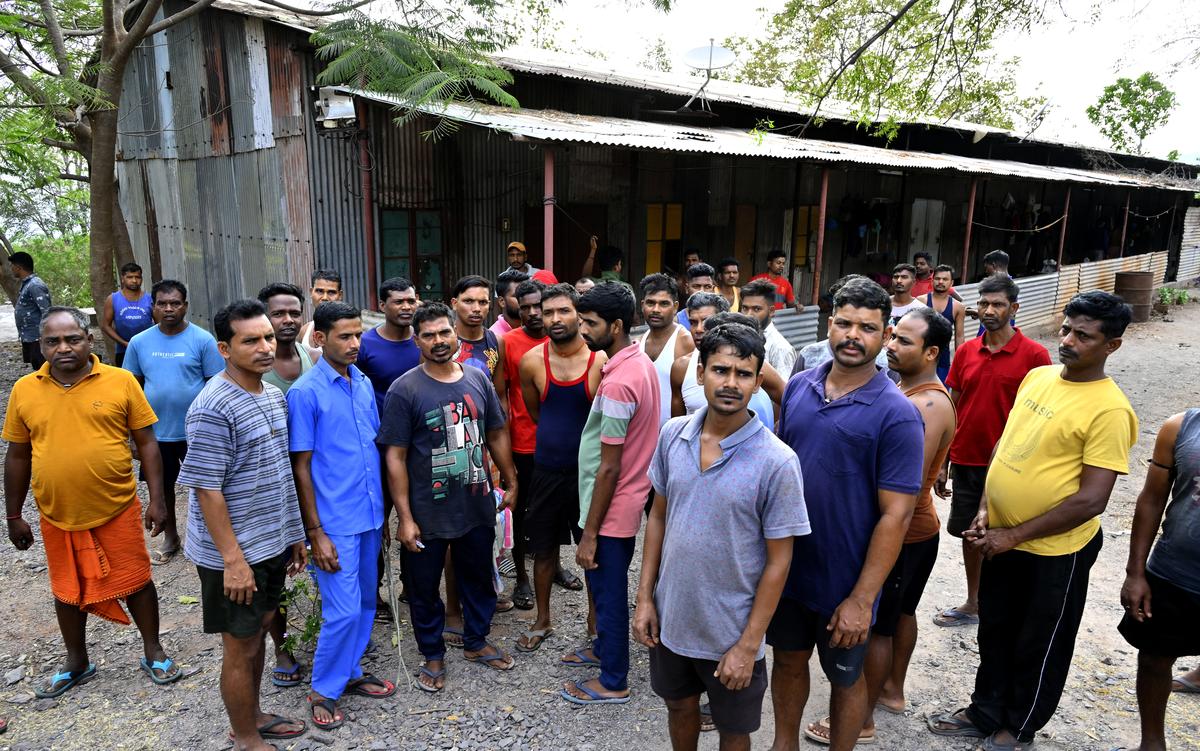The quiet village of Domalapenta in the Nagarkurnool district of Telangana is generally a pit stop for wildlife enthusiasts as it is nestled in the lush Nallamala forest range, which houses the Amrabad Tiger Reserve. Devotees also often flock to the village to grab a quick meal or snack before heading to the Srisailam Mallikarjuna Swamy temple located nearby, on the right bank of the Krishna river, in neighbouring Andhra Pradesh.
However, over the last week, there has been unusually hectic activity in the village. Since February 22, 2025, eight men have remained trapped inside the Srisailam Left Bank Canal (SLBC) tunnel, which is situated, as the name suggests, on the left bank of the Srisailam dam. They are Manoj Kumar and Sri Niwas from Uttar Pradesh; Sunny Singh from Jammu and Kashmir; Gurpreet Singh from Punjab; and Sandeep Sahu, Jagta Xess, Santosh Sahu, and Anju Sahu from Jharkhand.
Rescue teams from the Indian Army, Indian Navy, Border Roads Organisation (BRO), National Disaster Response Force (NDRF), State Disaster Response Fore (SDRF), Singareni Collieries, agencies from the Central and State government, as well as private agencies have all been working tirelessly to pull them out. Worried families and journalists have remained stationed at the spot too, regularly seeking updates.
Jagta Xess’ elder brother, Jitruam, who works at a private company in Hazaribagh in Jharkhand, has been waiting at the site for days. He was flown in here by the Jharkhand government. His hope is to somehow see his brother emerge unscathed from the depths of this tunnel.
“Since I am the eldest in a family of three brothers and sisters, Jagta, who is the youngest, hardly speaks to me. But he speaks to my wife, Basanti. Everyone loves him a lot,” says Jitruam.
Then his face falls. “Officials have been saying the operation will take a lot of time. I just keep praying that all the men come out safely,” he says.
A boom, debris, and gushing water
The SLBC tunnel is part of the Alimineti Madhava Reddy Project, which was started in 1983 to provide irrigation facilities in the drought-prone areas of Nalgonda district and to supply drinking water to fluoride-affected villages. The agreement to build the SLBC tunnel was made in 2005 when Y.S. Rajasekhara Reddy was Chief Minister.
According to officials of the Irrigation Department, until February 22, work on the tunnel had been completed for 13.93 km from the side of the Srisailam reservoir and another 20.43 km from the side of the Dindi reservoir, leaving 9.55 km of work to be completed. The tunnel is located 400 meters beneath the surface of the hilly region.
On the morning of February 22, there were 50 workers inside the tunnel, according to Jaiprakash Associates, the firm that was given the project contract and which is the flagship company of the Jaypee Group.
Phoolchand Sahu, 26, a worker from Jharkhand’s Gumla district, says while he was going to work that morning, he met some workers who were returning from night duty. They warned him and several other workers that water was seeping into the tunnel. Since seepage incidents were not uncommon in the tunnel, the workers cautiously went inside.
“We arrived at the tunnel entrance at around 7 in the morning and entered it using a locomotive as usual,” says Sahu. After an hour and a half, when the tunnel boring machine was being operated, Sahu recalls hearing a thundering noise. In an instant, cement and concrete blocks fell on the tunnel boring machine and water from the hole in the roof gushed down. “We saw that a portion of the tunnel had collapsed, burying the tunnel boring machine,” he says. “We just ran.” The tunnel had collapsed 14 km from its mouth.

A senior State government official coordinating the rescue mission says the incident happened in phases. “It occurred on a minor scale at 8:22 a.m. and then again at 8:40 a.m.,” he says.
Due to the strong water current, Sahu recalls nearly being swept away in the tunnel. “The power supply had stopped and the tunnel was engulfed in darkness. But we just kept running towards the entrance. Some people held the pipelines and some got onto the conveyor belt. We then saw the locomotive, jumped into it, and came out of the tunnel,” he says.
It was only when Sahu and the others exited the tunnel and checked the register that they realised that eight men — two engineers, two technical staff members, and four workers — who were closest to the tunnel boring machine were missing and 13 others were injured.

At around 1 p.m., Nagarkurnool Superintendent of Police Vaibhav Gaikwad arrived at the spot, followed by District Collector Santosh Badawath. Telangana Irrigation Minister N. Uttam Kumar Reddy also rushed to the site from Hyderabad by helicopter to take stock of the situation.
That night, at around 10 p.m., the NDRF launched a rescue operation. Later, other agencies, including the Marine Commando Force of the Indian Navy and a 12-member team of rat-hole miners, who were involved in the rescue of 41 workers trapped in the Silkyara tunnel in Uttarakhand in 2023, also joined the efforts. Firoz Qureshi, a member of the rat miners’ team, says removing the mud is the biggest challenge. “The situation at the SLBC tunnel is different from the Uttarkashi tunnel accident. Here, we are dealing with water and mud instead of rock,” he explains.

Daily wage workers from Jharkhand look for updates on the rescue operation near Domalapenta village.
| Photo Credit:
Nagara Gopal
The Chairman and Managing Director of Singareni Collieries, N. Balaram, says the tunnel boring machine broke into two due to the impact of the roof collapse, which further complicated rescue efforts.
The other workers remain sceptical about the possibility of the trapped labourers’ survival. “We don’t think they are alive,” says Sahu.

Pulling out all the stops
The rescuers have reached over 13 km inside the tunnel. However, the water and slush in the next few hundred metres have prevented them from getting to the trapped men. Since the day of the incident, 11 specialised teams from various organisations, including Jaiprakash Associates, have been involved in rescue efforts.

Members of the National Disaster Response Force prepare for a rescue operation at the SLBC tunnel.
| Photo Credit:
Nagara Gopal
On February 27, a team from the BRO inspected the tunnel and suggested cutting the rear parts of the tunnel boring machine. Initially, BRO experts had suggested using plasma cutters, which are often used in automotive repair and restoration, industrial construction, and salvage and scrapping operations, but the idea was abandoned as these are heavy and cannot be easily transported inside the tunnel.
A team from the South Central Railway also arrived with an ultra thermos cutter, which is designed to cut through metals thicker than 8 millimetres. They began cutting the dismantled parts of the tunnel boring machine to shift them out.
The National Geophysical Research Institute has also joined rescue efforts. A team from the institute entered the tunnel with a Ground Penetrating Radar unit, which is capable of detecting objects up to 10 metres deep. Another Ground Penetrating Radar unit was deployed on the hilltop for external assessments. Metal cutting experts have also been brought in.

“Meanwhile, de-watering operations have nearly been completed, with multiple teams using loco-dumpers to remove accumulated silt from the tunnel,” says an official. However, no one has been able to establish contact with the men, who are trapped without food and water.
Uttam Kumar Reddy says the teams will finish their operation within the next two-three days and work on the tunnel can resume in about two months. About the chances of survival of the victims, he simply says, “We remain hopeful until the operation is complete.”

A rigorous job
Workers who are watching the rescue operations are angry. Some unskilled daily wage labourers from Jharkhand allege that they had not been paid wages for the last three months. Munna Sahu from Gumla district says the workers receive only ₹600 per day from their agency, despite the dangers posed by tunnel excavation work. “The construction company provides no additional support, such as a common kitchen facility with LPG gas,” he says. “We collect firewood from the forest to cook our meals.”
Around 800 workers have been hired for this project. While 300 are from the region, the rest hail from Jharkhand, Odisha, Punjab, and Uttar Pradesh. The workers live in tin sheds, about 4 km away from the tunnel entrance, where they are provided with steel or iron beds, fans, and power points for charging phones. “We came all the way from Jharkhand (some 1,400 km away) because we got only ₹300 per day for an eight-hour shift there. But the poor safety measures here are posing a threat to our lives,” says a worker from Gumla district. If there is a health emergency, the workers say they visit the government health sub-centre at Domalapenta or the primary health centre at Mannanur, about 100 km away.

Daily-wage workers from Jharkhand anxiously wait for news about their fellow workers trapped in the Srisailam Left Bank Canal (SLBC) tunnel near Domalapenta village.
| Photo Credit:
Nagara Gopal
Describing their daily routine, Sahu says the workers usually wake up at 5 in the morning. By 7 a.m., they are expected to be sitting in the buses provided by the company, which take them to the tunnel. “It takes 12-15 minutes to reach the tunnel entrance via a 4-km-long ghat road that has no boundary rails. We leave our mobile phones in a storeroom at the entrance before boarding a locomotive vehicle into the tunnel,” he says. The workers are all given helmets.
“While the debris is primarily removed by the conveyor belt attached to the tunnel boring machine, we assist in clearing debris from the ground,” Sahu says. However, the workers voice concerns over safety. “We are forced to work for 10 hours instead of 8. Moreover, if an accident occurs inside the tunnel, there is no way out,” says another worker. Workers say they are not sure whether they want to continue working for the project once the rescue operation is completed.

‘No human error’
The chief engineer of the project, V. Ajay Kumar, says there was no human error involved in assessing the safety conditions of the tunnel. However, the formation of fresh cavities in the roof of the tunnel could have led to increase in seepage, leading to the collapse of the reinforced cement concrete slabs used as revetment, he explains.
“The work agency took all precautions before resuming work. We arrested the seepage with cement mixed with specified chemicals for grouting. But the intensity of seepage increased all of a sudden and a few roof slabs fell on the front portion of the tunnel boring machine before those deployed there could react and come out to safety,” he says.
“Those behind the tunnel boring machine suspected that something was wrong when they heard the noise and ran back to the mouth of the tunnel. They shouted to those positioned in front of the machine but they got no answer. They didn’t wait for them, fearing for their lives,” says an official coordinating the rescue work.
A retired Chief Engineer of the Irrigation Department, M. Shyam Prasad Reddy, says engineers of the Irrigation Department were happy when the contract of the tunnel excavation work was given to Jaiprakash Associates, a company that was part of the prestigious Sardar Sarovar Dam project in Gujarat.
Even as rescue operations are in full swing, hope is diminishing. Sandeep Sahoo, 28, was supposed to return home to Nakti Toli village this month. “We were informed about this tragic incident on the evening of February 22 by fellow workers from our village,” says his father, Jithu Sahoo. “Right now, all we are doing is praying.”

A night view of the SLBC tunnel.
| Photo Credit:
Nagara Gopal
Sandeep’s mother Bursimuni Devi, 50, says she spoke to him a day before the incident. “He was very happy and said that he would come home before Holi. He spoke to me, Arjun (his younger brother), and Purnima (his younger sister) that day. He was asking me what to bring from Telangana. I told him to bring whatever he likes. Forget seeing him, I haven’t even heard his voice for a week now,” she says.
Related Stories
Arjun says his brother earns around ₹15,000 a month. “He is the only earning member of our family and we just want him to be safe. My father has gone to bring him back,” he says.
[email protected]; [email protected]
With inputs from Amit Bhelari
Published – March 01, 2025 12:15 am IST
